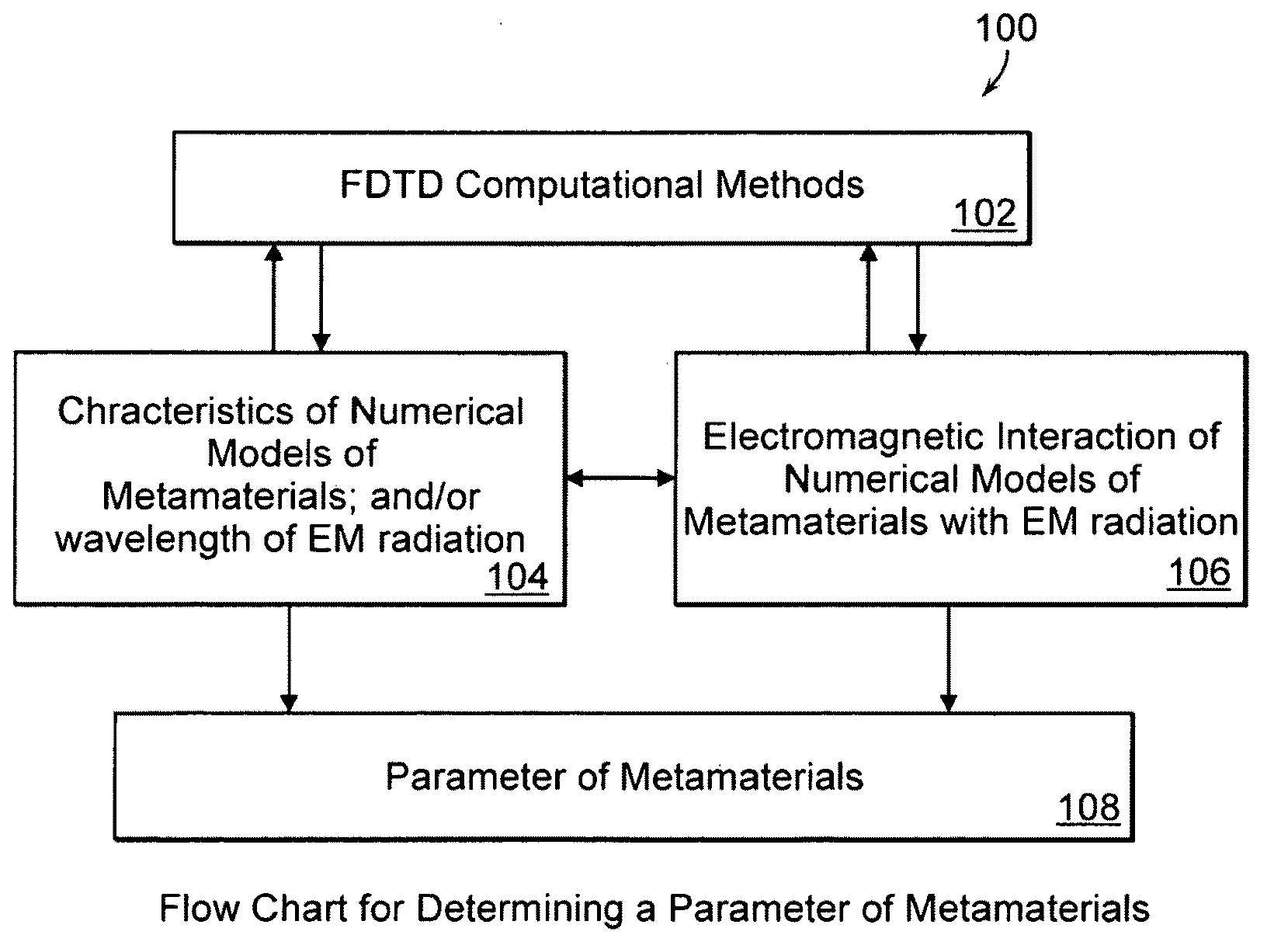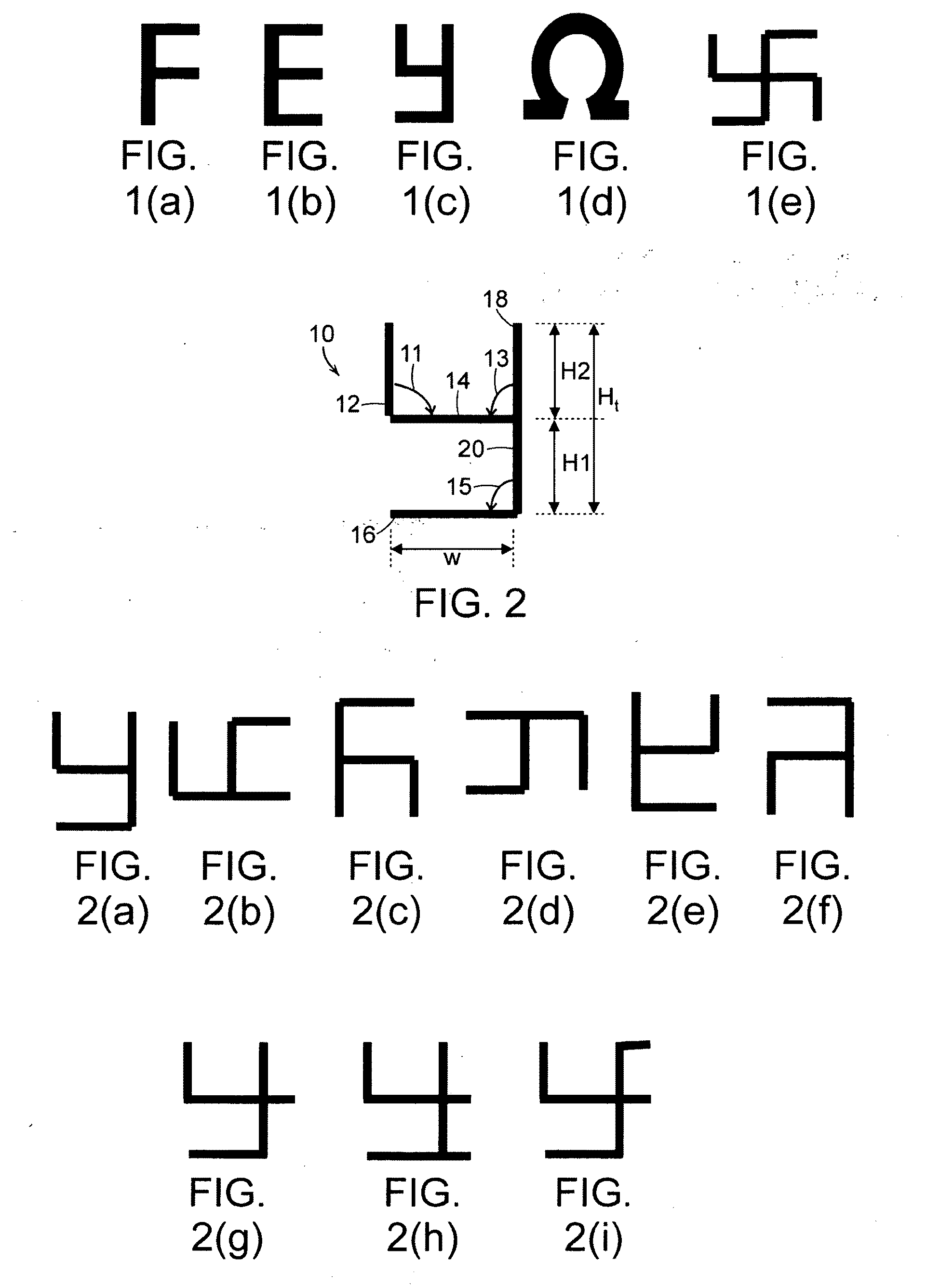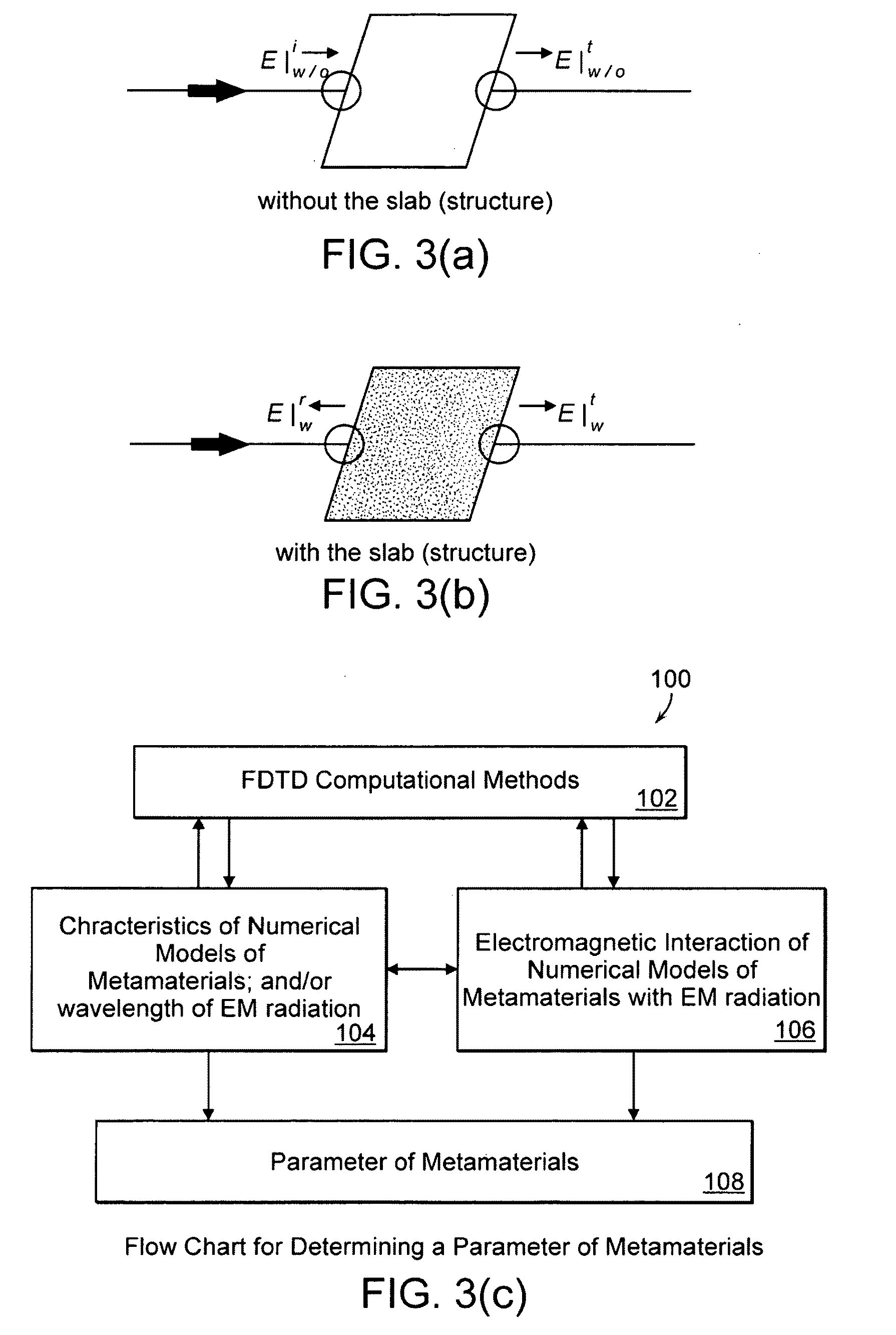Chiral Metamaterials
a metamaterial and chiral technology, applied in the field of chiral metamaterials, can solve the problems of stereochemically distinct 3-d structures, and achieve the effects of enhancing biomedical imaging, efficient control of dng transmission bands, and low cos
- Summary
- Abstract
- Description
- Claims
- Application Information
AI Technical Summary
Benefits of technology
Problems solved by technology
Method used
Image
Examples
example 1
Simulation and Modeling of Metamaterials having “y-type” Shaped Resonators
[0118]Three-dimensional (3D) Finite-Difference Time-Domain (FDTD) analysis of the electromagnetic wave interaction of an array of “y-type shaped” resonator was conducted to obtain transmission and reflection coefficients in the terahertz (THz) frequency regime. Referring to FIGS. 4(a)-4(b), FDTD model 30 was composed of a semi-infinite periodic array of “y-type shaped” resonators 10 embedded within free space 32 inside a waveguide. Perfect electric conductor (PEC) walls and perfect magnetic conductor (PMC) walls located in the transverse direction and in the direction of periodicity, respectively, formed the boundary conditions of FDTD model 30. Gaussian beam 34, normally propagating through the waveguide was used as a source of the excitation at one of the two input ports. Uniaxial perfectly matched layers (UPML) 36 and 38 were set at the ends of the ports to absorb the outgoing waves.
[0119]Maxwell's three di...
example 2
Designing Double Negative Metamaterials: Prediction of Electric Resonant Frequency and Magnetic Resonant Frequency of “F-type”, “E-type” and “y-type” Shaped Resonators
[0125]The Drude-Lorentz model of the effective permittivity for a resonator including an array of rods is given as described above in Equation (7). As shown in FIG. 6(b), the two horizontal lines introduced in each break of the rod shape of FIG. 6(a) can enlarge the surface area of the capacitance, Ce. This will lower the electric resonant frequency ωe0. Similarly, by bending the vertical rod of FIG. 6(a) and creating the “S” shape as shown in FIG. 6(c), ωe0 and ωep can be further lowered. F-type, E-type, and y-type shaped resonators are all constructed with main vertical axes (vertical components) combined with arms (horizontal components) that can increase the value of Ce (see FIG. 6(d)). Thus, it is expected that these shapes will scale down the location of the negative permittivity (−ε), based upon the observations...
example 3
Transmittance Properties of Metamaterial Models
[0129]Three-dimensional Finite-Difference Time-Domain (FDTD) analysis of the electromagnetic wave interactions with metamaterials models was conducted to obtain the transmission / reflection coefficients for chiral metamaterials with resonators in the nanoscale dimension range (visible, ultraviolet, near-IR regions). An FDTD model was composed of an infinite periodic array of S-type, F-type, E-type or y-type shaped resonators embedded within a dielectric slab located inside a waveguide. Perfect electric conductor (PEC) walls and perfect magnetic conductor (PMC) walls located in the transverse direction and in the direction of periodicity respectively, form the boundary conditions of the model. A Gaussian beam, normally propagating through a slab was used as the source of excitation, at one of the two input ports.
[0130]The results shown in FIG. 8(a) were obtained from the computation of the S-type, F-type, E-type and y-type shaped resonato...
PUM
| Property | Measurement | Unit |
|---|---|---|
| near-IR wavelengths | aaaaa | aaaaa |
| angles | aaaaa | aaaaa |
| wavelength | aaaaa | aaaaa |
Abstract
Description
Claims
Application Information
 Login to View More
Login to View More - R&D
- Intellectual Property
- Life Sciences
- Materials
- Tech Scout
- Unparalleled Data Quality
- Higher Quality Content
- 60% Fewer Hallucinations
Browse by: Latest US Patents, China's latest patents, Technical Efficacy Thesaurus, Application Domain, Technology Topic, Popular Technical Reports.
© 2025 PatSnap. All rights reserved.Legal|Privacy policy|Modern Slavery Act Transparency Statement|Sitemap|About US| Contact US: help@patsnap.com



